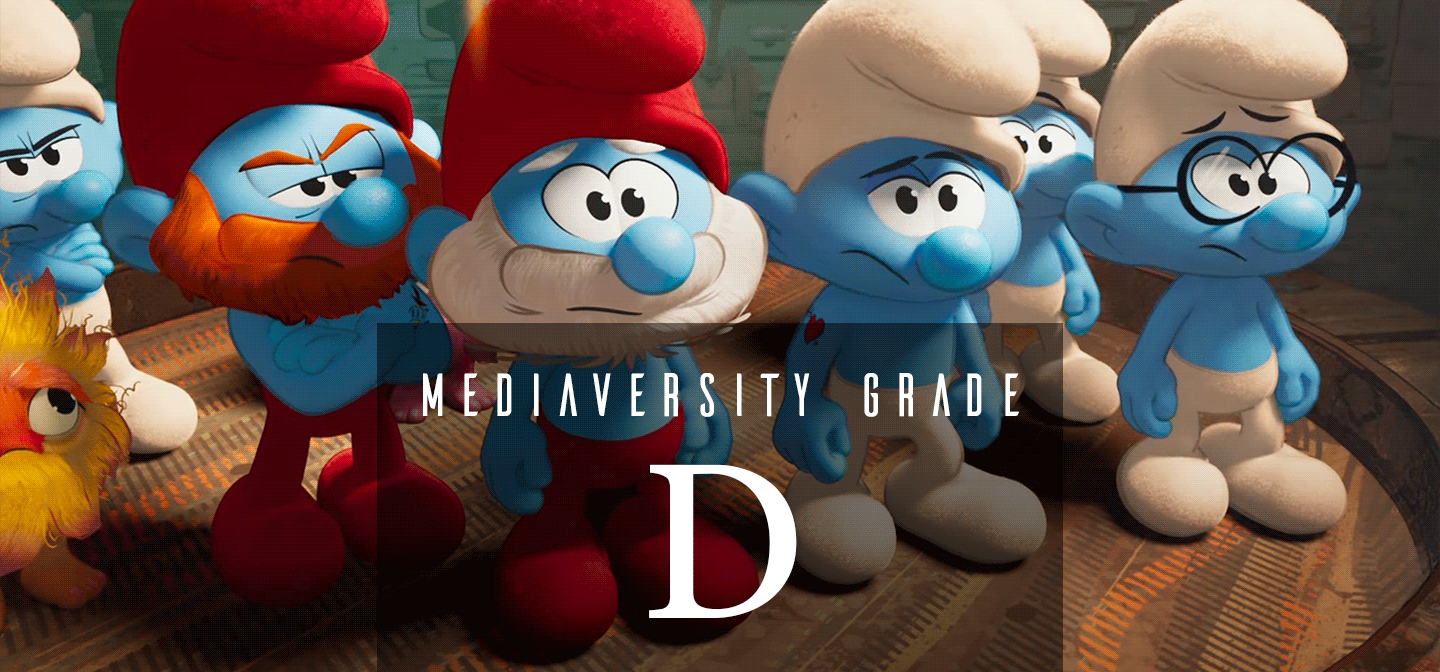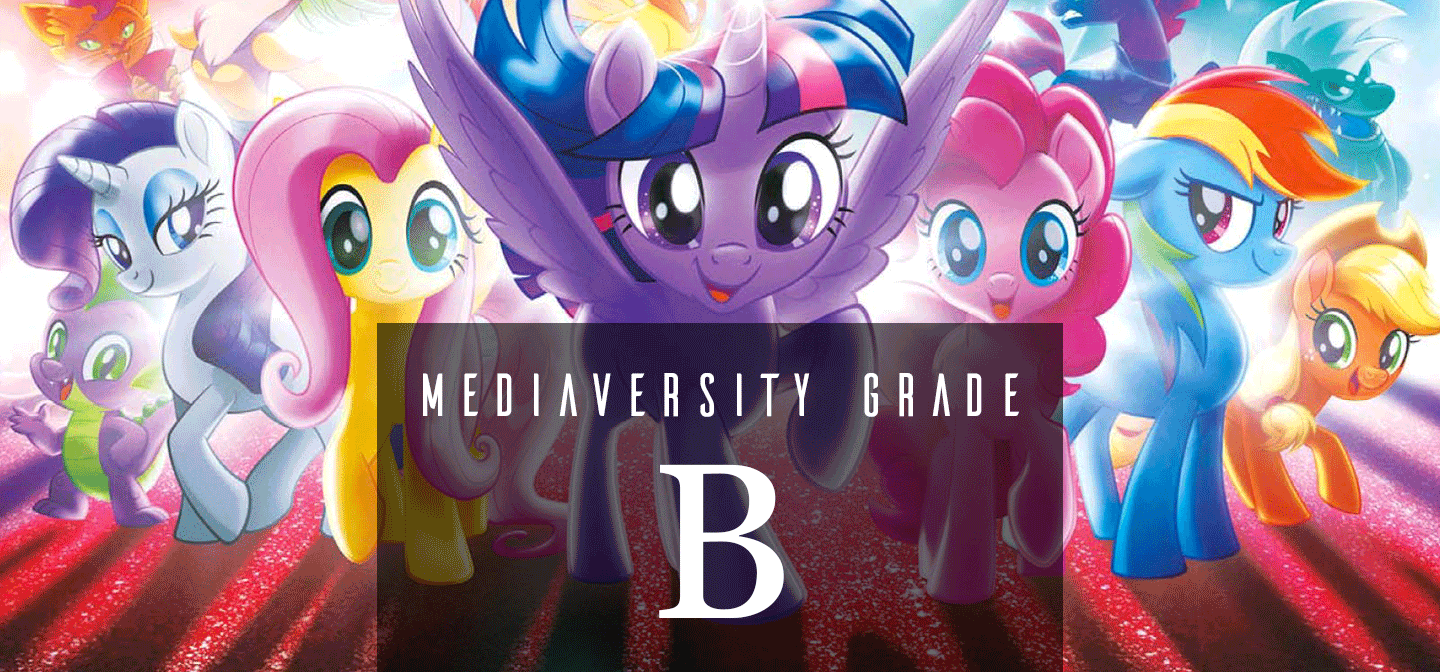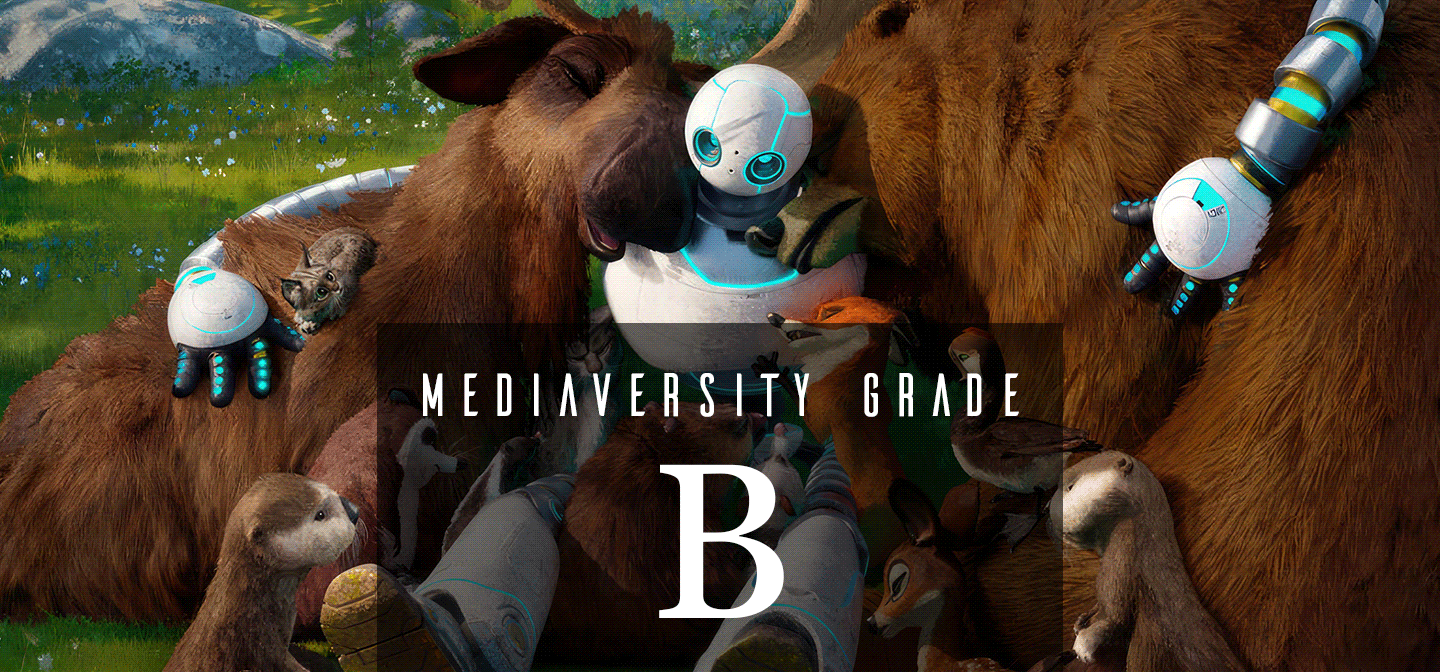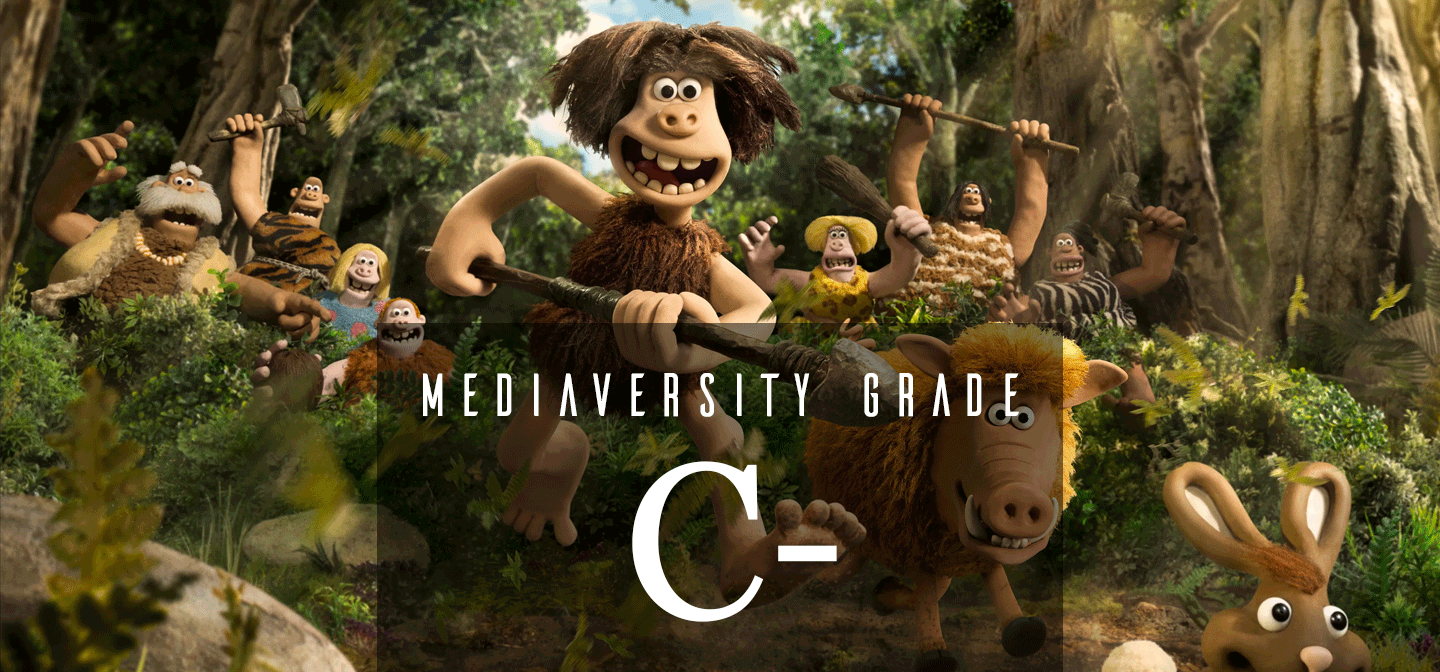Smurfs
“Is it too much to ask for a kids’ movie like Smurfs to skip the value judgments on food and body size?”
Title: Smurfs (2025)
Director: Chris Miller 👨🏼🇺🇸
Writers: Pam Brady 👩🏼🇺🇸 based on the characters by Peyo 👨🏼🇧🇪
Reviewed by Li 👩🏻🇺🇸
Technical: 2.5/5
A beloved comic since the 1950s, The Smurfs has several adaptations in its storied past. In recent years, Sony Pictures Animation released three films between 2011 and 2017. Today’s reboot, simply named Smurfs, marks Paramount Animation’s first foray into the franchise, helmed by director Chris Miller (Puss in Boots, Shrek the Third) and writer Pam Brady (Ruby Gillman: Teenage Kraken, Team America: World Police).
First, the good: Smurfs continues the wonderful trend of using mixed animation styles and bolder cel-shading to create a neat 2D-3D aesthetic, seen in Marvel’s Spider-Verse movies or Netflix’s KPop Demon Hunters (2025)—both, incidentally, from Sony Pictures Animation. Environments change, going from bubble-shaped, Pixar-like renderings in Smurf Village to live-action hustle and bustle when our smurf heroes get to Paris. Even the medium shifts around, with animators dabbling in claymation, anime, 8-bit sprites, and more.
Unfortunately, this bursting creativity quickly descends into chaos. With plot points hopping around as quickly as the animation does, Smurfs becomes an empty collection of clips and story beats—a TikTok feed with some catchy moments, like the film’s appealing musical numbers, but most of it blurring into white noise. By the end of your doomscrolling, you wonder what you spent all that time watching.
Gender: 2.25/5
Does it pass the Bechdel Test? YES
True to its original formula, Smurfs tokenizes one female character, Smurfette (voiced by Rihanna), among mostly male leads: No Name (James Corden), Papa Smurf (John Goodman), and Ken (Nick Offerman), plus villains Razamel and Gargamel (both voiced by JP Karliak). It’s frustrating to see Smurfette get top billing in the movie’s marketing—“Rihanna is Smurfette”—but on screen, her sole function is to provide emotional support to a directionless boy, No Name, who somehow winds up being the hero.
The only other female-coded Smurf Villager of any significance is Vanity (Maya Erskine). They both fall into traditional gender roles. Smurfette wears heels and a dress; Vanity obsesses over her looks, makes cringey comments about wanting to be thin, and wears a flower in her hat. And while female characters pop up as helpful allies in other roles, such as Natasha Lyonne’s crotchety Mama Poot and Paris’ Moxie Smurf (Sandra Oh), at the end of the day, they all exist to help out the film’s forgettable male lead.
Race: 1.5/5
Smurfs lives in a fairly colorblind world, with the majority of its characters made up of the titular blue-skinned creatures. When humans do show up during brief live-action scenes in Paris and Germany, they’re mostly white. Humans Razamel and Gargamel are light-skinned with black hair—also presumably white, given Razamel’s castle location in Germany.
Behind the screen, voice actors are also thin on diversity. Despite multiracial Barbadian performer Rihanna playing a main character, you have to go pretty far down the line to find another actor of color. In supporting roles, Vanity’s Erskine is biracial Japanese and white, while Moxie’s Oh has Korean ancestry. Minimal screentime also goes to the purplish space villain Asmodius, voiced by Black actor Octavia Spencer.
Bonus for LGBTQ: +0.00
Brothers Razamel and Gargamel are voiced by Karliak, who’s genderqueer and the founder of a nonprofit dedicated to training LGBTQ voice actors. But in the film itself, it’s hard to say whether or not his characters fall into the cliche of queer-coded villains in a tiresome way, or in a positive way that reclaims queer villainy. It usually comes down to whether or not there’s a range of LGBTQ characters in a film to offset any villainous tropes. Smurfs lacks other queer-coded characters, but it's still meaningful that Karliak, who’s working to expand opportunities for queer people in voice acting, fills these important roles.
Deduction for Body Diversity: -0.25
Children's content typically avoids overt fat-shaming these days, and Smurfs follows suit with nothing garishly awful on the topic. You’ll find no slow-mo body fat; no explicit talk of diets or working out. But stray lines of dialogue still reinforce ugly narratives about which bodies are coveted and which are undesirable: Vanity mentions wanting to be thin, and when Gargamel gossips about his brother, he says that Razamel’s clothes are tight, yet he keeps eating burgers and fries.
I brought my 3-year-old to this movie, and I didn’t relish having him hear these value judgments about food and body size. Preschoolers are rapidly absorbing prejudices at this age; a British study shows that 4-year-olds already consider fat people to be less intelligent, less popular, and more unhappy than their thinner counterparts. Toddlers are also beginning their relationships with food, with pediatricians asking parents not to label foods as “good” or “bad,” which can eventually lead to disordered eating. (Gargamel definitely implies that burgers and fries are “bad” and fattening.) Is it too much to ask for a kids’ movie to skip these toxic messages?
Mediaversity Grade: D 2.00/5
After seeing the near-universal panning of this movie by adult film critics, it’s probably more helpful to hear from its target audience. As mentioned, my 3-year-old attended this screening with me, and his reaction mirrors what I said up top: Smurfs is a glitzy video feed that entertains you in the moment. My kid sat transfixed for the full 90 minutes, but I only heard him giggle once or twice. Similarly, the theater audience—which had plenty of other kids with their parents—was pretty quiet. Even if you’re just trying to keep your child entertained with some screen time, there are more enriching (and more inclusive) options out there.




